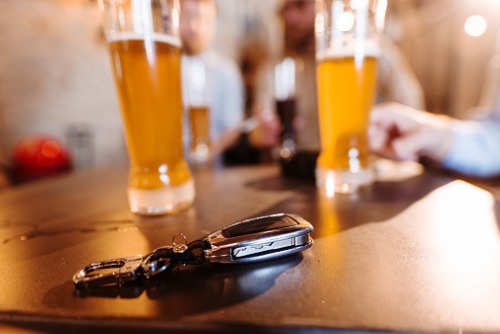

It’s almost uniformly accepted in US society today that it’s a bad practice to drive drunk – and yet, people continue to get behind the wheel after a few drinks on a pretty regular basis.
Bar and tavern owners are obliged by law to stop serving alcohol to patrons who they believe might be gearing up to drive over the legal blood alcohol driving limit. If they take no action and a patron gets into a drunk driving accident, the bar can be held liable.
With such risks readily available on tap, applying appropriate insurance and loss control for bars and taverns can be challenging, according to Tom Gillingham, owner and CEO of EverGuard Insurance Services, which provides specialty insurance and service for restaurants, pubs, casinos and other hospitality businesses serving alcoholic beverages.
“Even the best hospitality operators in the business face the risk of people getting intoxicated and then driving cars,” Gillingham told Insurance Business. “You can underwrite them to death and select only the finest operators but it’s just a sad fact of the business that you’re going to see some amount of alcohol-related automobile accidents and fatalities, so that makes it difficult. “
Bar and tavern insurance isn’t “something you can really dabble in,” according to Gillingham. To make a program successful, you need lots of historical data, loss control expertise, and experience to know how to price the business down to an individual account level, he said.
“The laws for hospitality businesses serving alcohol vary state by state. One of the common themes across states is the concept of ‘visible or noticeable intoxication,’ which is the point at which a bar or bartender is supposed to refuse service to a patron,” Gillingham explained. “If they continue to serve somebody under those circumstances, that’s where we start to have a liability problem.
“Of course, that’s a very subjective standard and it doesn’t necessarily correlate well to blood alcohol level either. A seasoned drinker often can have a very high blood alcohol concentration, be legally impaired, but function relatively normally to the naked eye, whereas somebody who doesn’t drink frequently could have one or two drinks and have a difficult time with their speech or holding their composure. That’s the tough part of the business.”
Where Gillingham said he’s noticed some improvement is with the advent of rideshare services like Uber and Lyft. However, not everyone is inclined to spend money on a ride home. To try to encourage people to take a cab, EverGuard Insurance Services is trialling a pilot program, in which it has given a handful of bar and tavern clients a single-use disposable breathalyzer, which also comes with a discount voucher for a rideshare service.
If a responsible patron is attempting to cut somebody off for showing ‘visible or noticeable intoxication,’ or they’re concerned a patron is over the limit for driving, they can ask the patron to take the breathalyzer test. If the patron refuses, they won’t get served any more alcohol. The tests are supposed to give bartenders more guidance around what action to take, and they can encourage the patrons to take alternate transportation home with the rideshare discount voucher.
“Loss control techniques, like our breathalyzer program, are really important right down to an account level. There are lots of nuances in state laws and even in the character of specific city neighborhoods. If a bartender misjudges a situation with a patron, the ensuing lawsuits are typically not in favor of the bar,” Gillingham added. “Again, litigation trends vary state by state. The state of California, for example, has very favorable liquor liability laws, whereas other states have almost draconian laws where if you served a beverage at any point in the evening to somebody who ended up causing an accident or a problem, you can be dragged into a lawsuit quite easily.
“A lot of these cases are very tragic. People are getting badly injured and killed - sometimes at absolutely no fault of their own - and if you were the last bar to serve that customer a drink, their blood alcohol level was in excess of the legal limit and they had any sort of visible signs of intoxication, then it’s a difficult case to win.”
